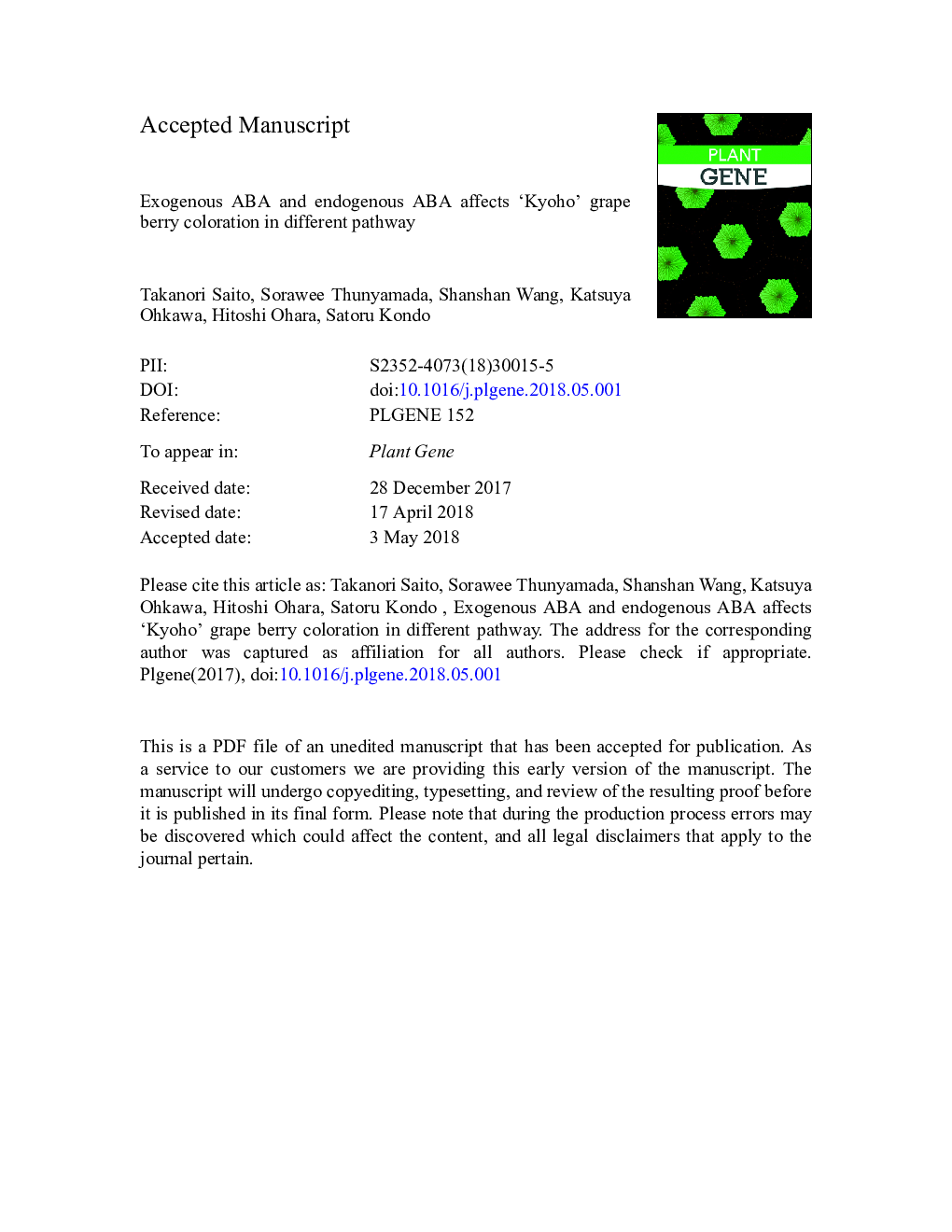| Article ID | Journal | Published Year | Pages | File Type |
|---|---|---|---|---|
| 8647733 | Plant Gene | 2018 | 35 Pages |
Abstract
Abscisic acid (ABA) or Abscinazole (Abz), which is the specific inhibitor of CYP707A and induces endogenous ABA, was applied to 'Kyoho' grape berries at 30â¯days after full bloom (DAFB), and 37 DAFB (veraison). The RNAs were extracted from the grape berry peels, which were sampled at 15 and 45â¯days after treatment (DAT), and analyzed using next generation sequencing to assemble RNA-seq data. Anthocyanin accumulation in ABA- and Abz-treated berry peels increased compared with the untreated control. ABA and Abz application affected anthocyanin biosynthesis genes in different ways. At 15 DAT, ABA application significantly upregulated MYB113-like, bZIP42-like, and UGT85A2-like genes, while Abz application significantly induced bZIP42-like gene expression only. Additionally, significant induction of DNA methylation levels of the MYB113-like gene was found in ABA application, which was correlated with heightened accumulation of anthocyanin concentrations in ABA-treated berry peels. Moreover, ABA application decreased the chlorophyll a/b ratio and suppressed the expressions of LHCA1-like and LHCB3-like genes, while Abz application did not affect these genes. The results suggest that exogenous ABA and endogenous ABA influence grape coloration via different pathways.
Related Topics
Life Sciences
Agricultural and Biological Sciences
Plant Science
Authors
Takanori Saito, Sorawee Thunyamada, Shanshan Wang, Katsuya Ohkawa, Hitoshi Ohara, Satoru Kondo,
